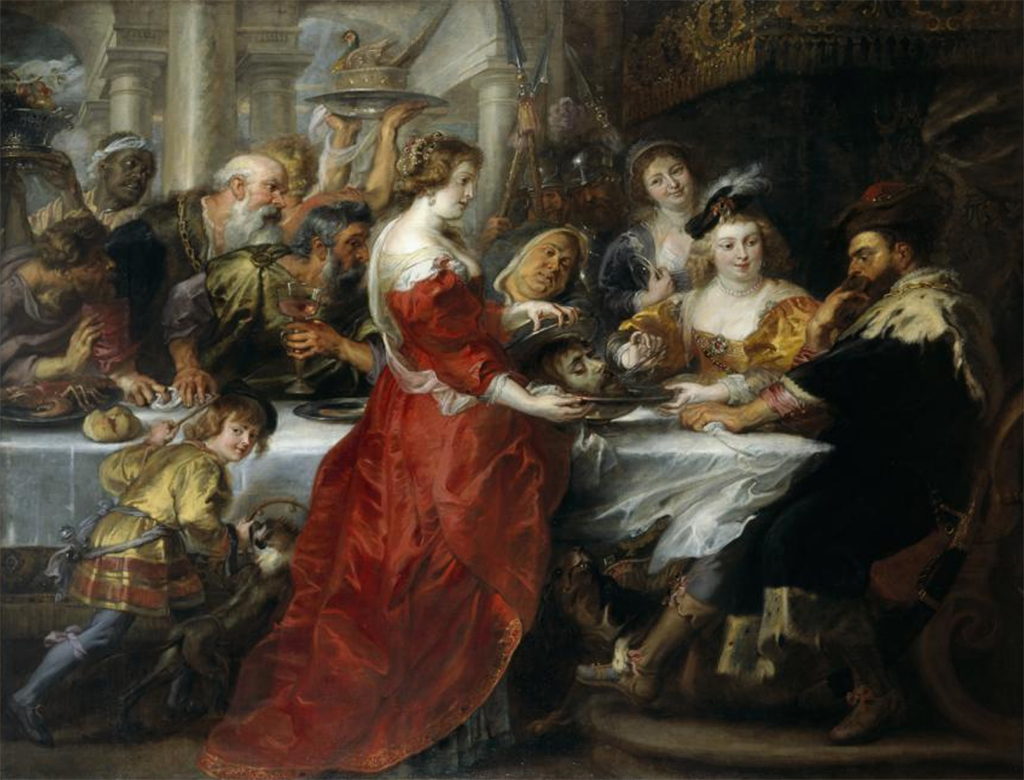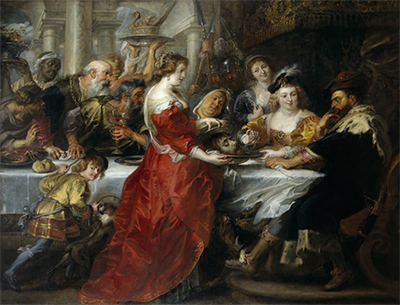This somewhat vulgar scene, albeit captured beautifully by Rubens, features Salome displaying the result of her revenge over St John the Baptist, his head literally on a platter.
King Herod sits in shock as one of his opponents' death is revealed in such a grotesque manner, without any type of warning as to what was placed on the silver plate. Salome's calmness at this reveal is somewhat disturbing, suggesting a lack of emotion. The wonderful composition here reveals a standard feast with happiness for many guests, suddenly broken up by this political event.
Beyond the specific content in this painting around the life of Herod, there are the usual hallmarks of a classic Rubens painting, with enlarged figures and the richest of colours - elements of Titian's influence can be seen throughout his career. The Venetian school was particularly well known for its desire to brighten up the Renaissance and it seems Rubens took some of this into his own work as part of the Northern Renaissance.
There is a strange balance between the elegant nature of this feast, with food at every turn, guests in elegant attire and a background of marbled Roman pillars looking resplendant. Then in constrast is the actions of Salome to completely change the mood. The reaction of the guests with humour and celebration to this suggests at how society was different during these years, and particularly more brutal and raw.
The general concensus is that this painting was most likely produced for a donor named Gaspar de Roomer who was based in Naples, but originally from a similar region to Rubens. He himself was a merchant with a great wealth to call on from his business enterprises. De Roomer commissioned this artist on several occassions and appreciated his connection between the Italian and Northern Renaissance.





